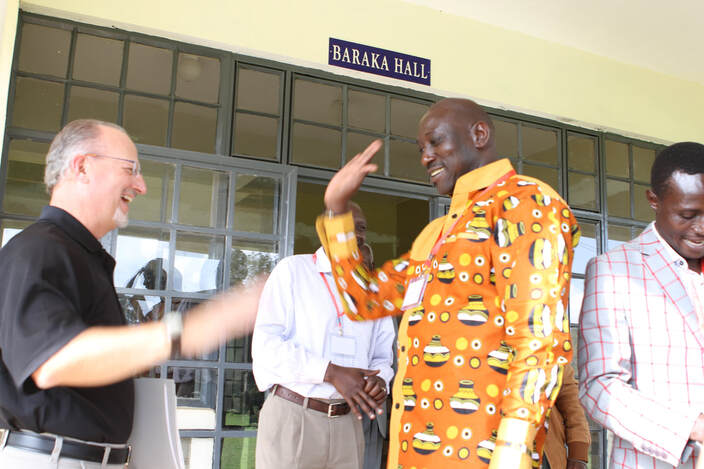 Peter and I sat together near the dining hall table, encompassed on either side by other former students of mine. The fellowship during the evening meal was an extension of the special reunion that had started only two hours earlier. I traveled back to Kenya for the purpose of reconnecting with students I had taught twenty years before as dean of a theological seminary situated high among the tea fields of Limuru. Peter is an exceptional and insightful Maasai who graduated with a Diploma in Theology and went on to earn advanced theological degrees. He is a leader among his village elders. As we laughed while enjoying reminiscing over a traditional meal, conversation shifted to my purpose for returning after all these years. Peter asked probing questions related to the subject at hand, which was what must be done to finish the task of reaching the unreached peoples of East Africa. He pressed the issue and stated that from his perspective, the churches that have been planted in Maasai land are seen by many in the villages as irrelevant. Peter explained that many villagers see the church as a Sunday place of worship and preaching, but when they have a need during the week they turn to either the government or NGOs (non government organization) to meet their needs. For all practical purposes, the church is irrelevant to the average villager, particularly during a time of great need or crisis. Peter asked the question that my colleagues and I had journeyed so far to address: What would happen if the churches we plant among the least reached could be seen as centers of community development? Peter’s question is a vital one to be asked of every indigenous church plant, especially those started in areas of gripping need. What would happen if the church is seen as the center of community development? What changes when the church becomes the primary source of help for a village or community in symphony with government and non-government resources? What if addressing need is not merely a gateway to evangelism, but the embodiment of what the church is meant to be? One undeniable result of a paradigm shift toward holistic mission is that the church is seen as relevant to all of Village life, and that changes everything. Our goal is not to plant churches that are culturally relevant; our goal is to live out the holistic mission of Christ to enjoy an all-consuming love for God, and to express corresponding self-sacrificing love for our neighbors in every village and city. Relevance follows identification. When we actively identify with the compassionate person of Christ who healed individuals and grieved over estranged people groups, the result is undeniable relevance of the church of our Lord Jesus Christ. Holistic mission produces a relevant church. Dane Fowlkes, Ph.D. Co-Founder, The Unfinished Task Network
1 Comment
Lynne Rienstra
11/5/2019 09:38:46 am
Dane, this is a fascinating post which raises such important questions. When I served with Africa Inland Mission near Narok in the summer of 1980, I met some of the first Christians among the Maasai. I look forward to seeing how God continues to lead you in pursuing answers that will activate and transform the Church in East Africa.
Reply
Leave a Reply. |
Archives
October 2020
Categories |
 RSS Feed
RSS Feed